
Rediscovering Japan

Rediscovering Japan
Travel (Sapporo/Otaru Part 2)

by tomizuta
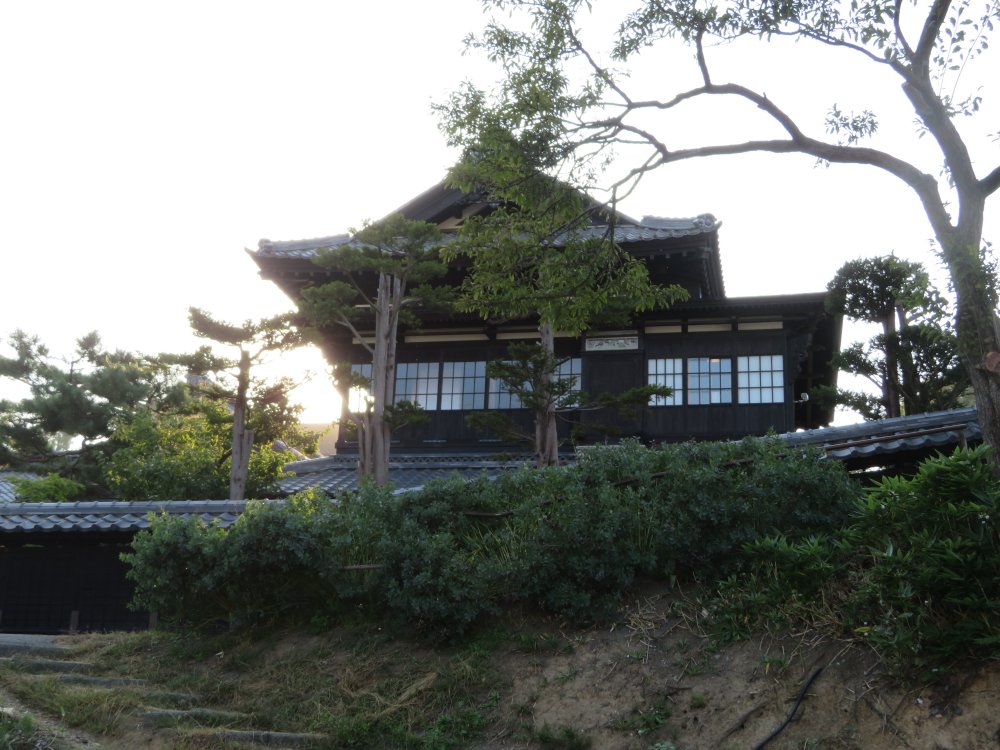
I looked up from the car park to the grand Nishin Goten (herring mansion) a former villa of a wealthy family that spent the equivalent of 30 million dollars in current money and took several years to complete in the northern outskirts of Otaru City.
On the following day, we set out to explore Otaru City. Otaru is located about forty kilometers north of Sapporo, facing the Sea of Japan. The name Otaru originates from the indigenous Ainu name for the place Otarunai, shortened to Otaru in 1869 upon the establishment of the Hokkaido Development Commission. Otaru’s development was fueled by the herring fishing from the late Edo period and the improvement of the port facilities serving as the main entry port for the settlers, coal shipment, trading with Sakhalin as well as a fishing port. Otaru was the third largest city in Hokkaido until the 1950s with a peak population of over 200,000 but has since declined to 120,000, as Otaru with its barges and canals lost out to modern ports on the Pacific side and herring catch declined dramatically. Many of the buildings and warehouses have been retained or converted to modern shops, making Otaru a famous tourist site. We had initially thought of using public transport, but recognizing some places of interest were located outside the city center, we opted to rent a car for the day. The rental is not that expensive.
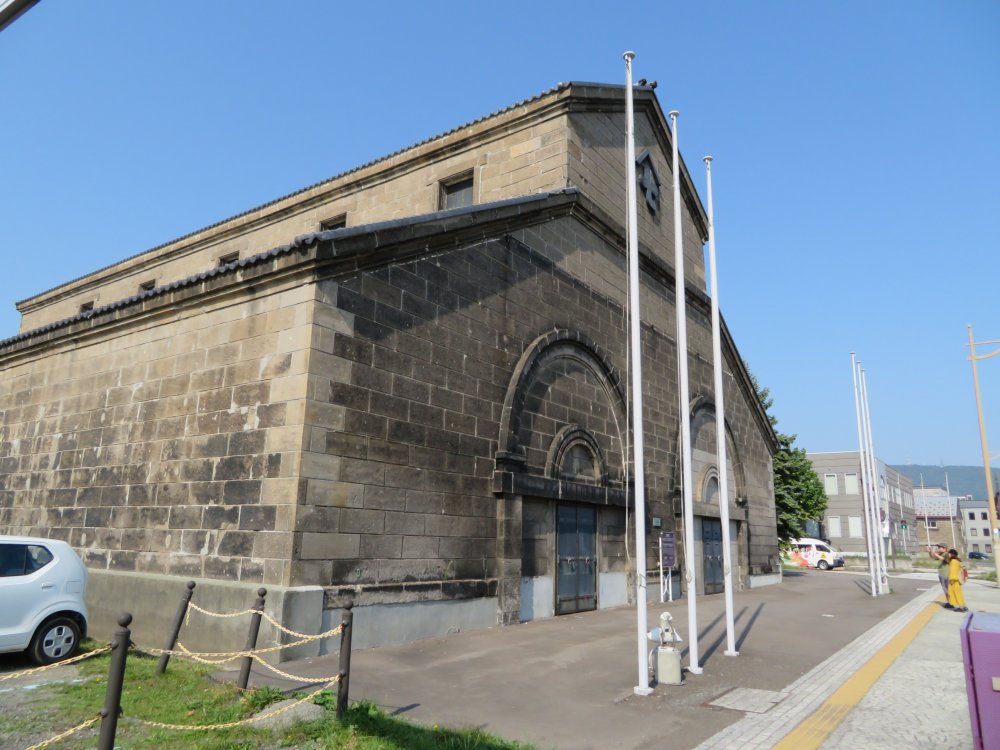
We parked in the car park of Otaru General Museum Unga-kan (Canal Museum) which is a two minutes' walk north of the Museum. The building by the car park in the picture is the former Ooie warehouse built in 1891. Ooie was a seafood merchant from Ishikawa Prefecture. The building is Sapporo soft stone cladding on a wooden frame, a typical architecture style in Otaru as I will explain later.
Based on my pre-study of the recommended sightseeing routes, we first visited Otaru General Museum Unga-kan (Canal Museum). The museum occupies the northern section of a timber-framed stone storage building built in 1893 by a merchant from Ishikawa Prefecture used for storing grain and seafood. There are two exhibition rooms, the first focuses on the development of Otaru with displays related to the port and canals, herring fishing (some objects of which we had seen at The Historical Village of Hokkaido in Sapporo) and the trading between Hokkaido and mainland Honshuu. This was quite informative. The second focuses on nature and archaeology. There is a description outside that tells that the building complex that the museum is situated in is "One of the first commercial use warehouses built in the Ironai district immediately after the reclamation of the area. While the original construction consisted of the front right side of the building, further additions enclosed two courtyards to create a warehouse of truly grand proportions." The admission fee is 300yen and well worth it.
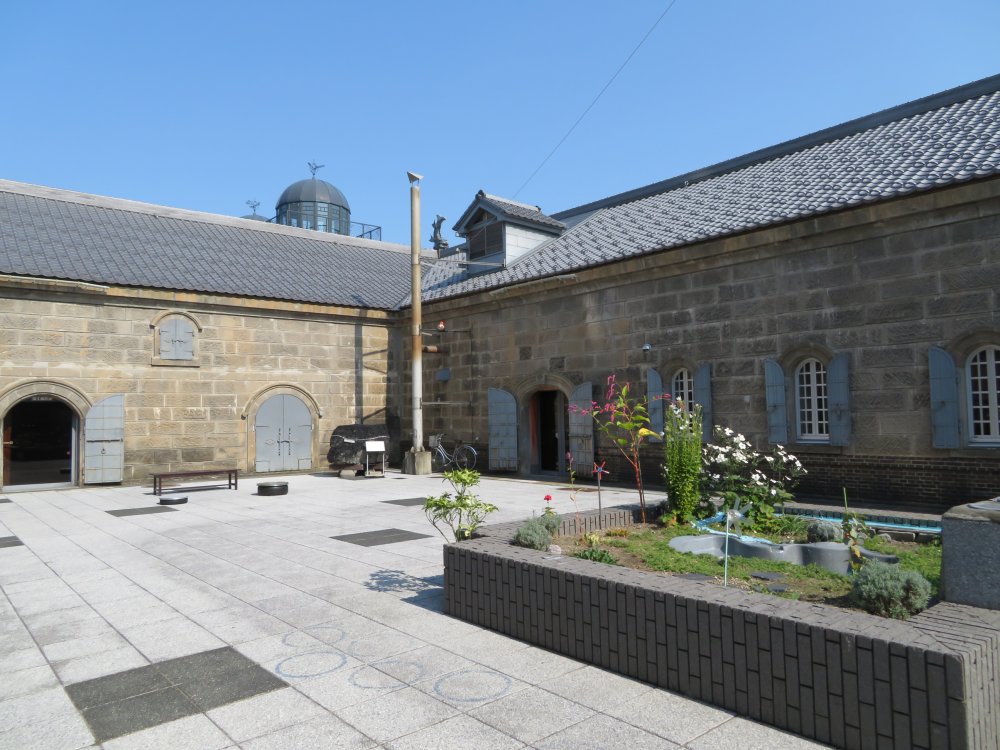
The courtyard in the building complex housing the museum. The museum entrance area is on the right. Note the mythical carp (shachihoko) on the roof in the far back.
We next paid a brief visit to the tourist information facility (Unga Plaza) that occupies the southern section of the warehouse complex. Here you can pick up maps and other useful leaflets as we did. I understand they have English, Chinese and Korean speakers.

You can pick up maps and other useful leaflets at the tourist information facility (Unga Plaza) that occupies the southern section of the warehouse complex.
The canal lies in front of Canal Museum and Unga Plaza. We crossed the road and started to walk north on the sidewalk by the canal. The canal completed in 1923 originally ran 1,300 meters with a width of 40 meters. After a long debate on preservation, some of the southern part was filled and the remaining canal narrowed to 20 meters width. The recommendation I had received was to start the tour from the northern part of the canal (kita unga) which retains the original features. The first to catch my attention was a building on the other side. This is a reinforced concrete warehouse building of a cannery company built in 1924. I was interested to see the elevators and spiral chutes used to load the goods on the barges.
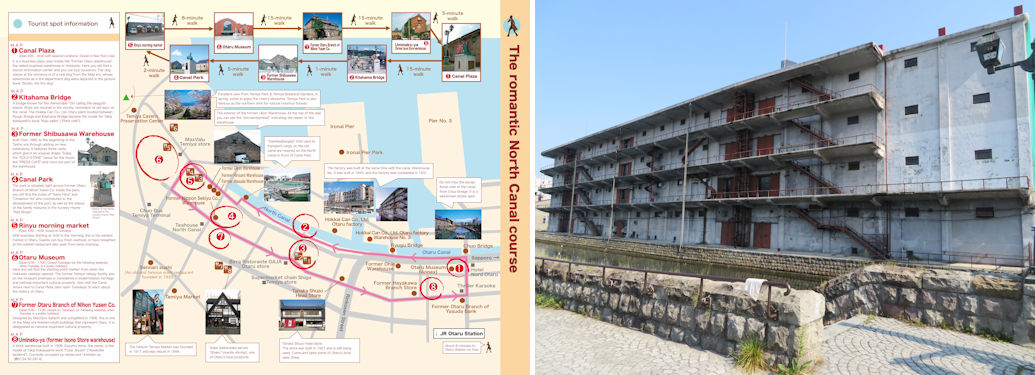
(Left) Map of the North Canal Route I obtained at the tourist information center (Unga Plaza). Click here to download the brochure from the website of the City of Otaru. (Right) The warehouse building of a cannery company by the canal built in 1924.
A rickshaw with two passengers overtook us and stopped at Kitahama Bridge. As I caught up, I heard the driver telling the passengers that he had brought them here first as the area retains the original scenery of the canals much more than the popular southern area. Maybe the passengers were more anxious to visit the popular shopping area in the southern area, the driver made a u-turn and quickly left.
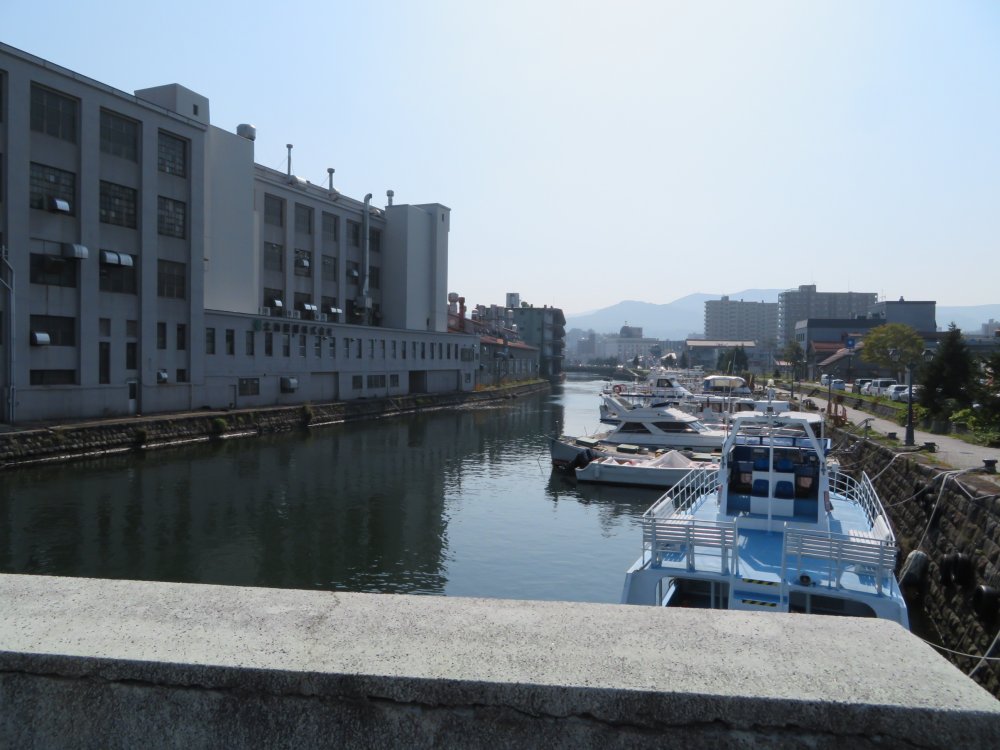
Looking to the south from Kitahama Bridge.
On the banks is another historic building, the former Shibusawa Warehouse.
It was part of the enterprise of Eiichi Shibusawa, the founder of Japan’s
banking system. The earliest part was built around 1892. It is now used
as a café and theater.
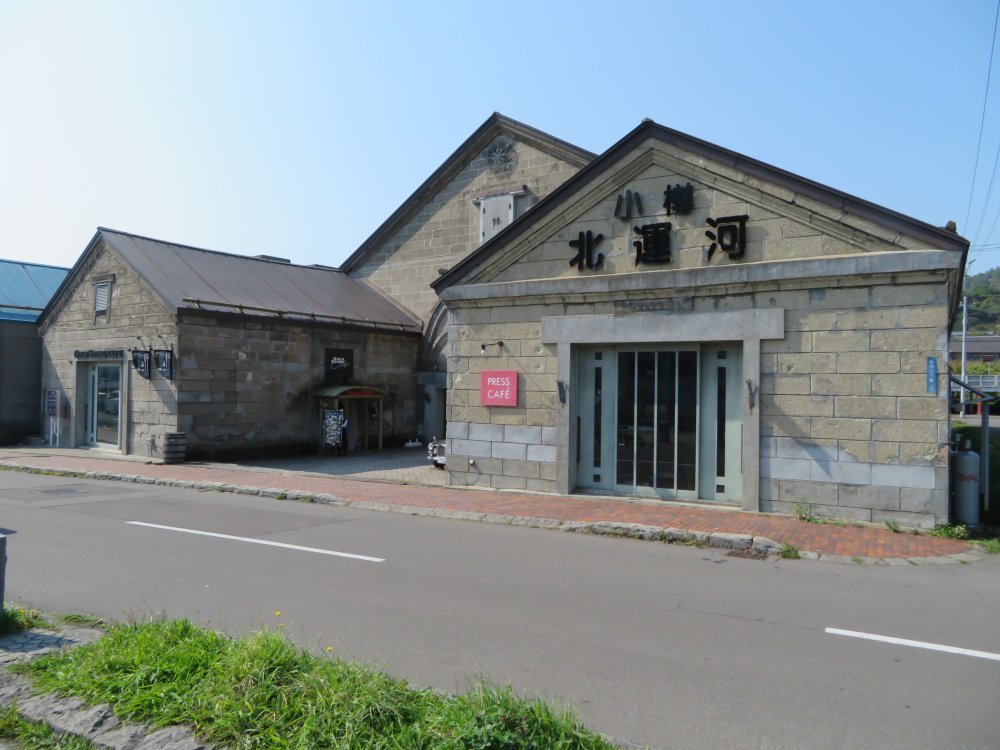
The former Shibusawa Warehouse as seen from Kitahama Bridge.
Otaru in its heydays attracted many industrial, shipping companies and banks to the city. It was unfortunate that the nearby former Nihon Yusen Company’s Otaru Branch building, maintained as a museum was closed for refurbishment.
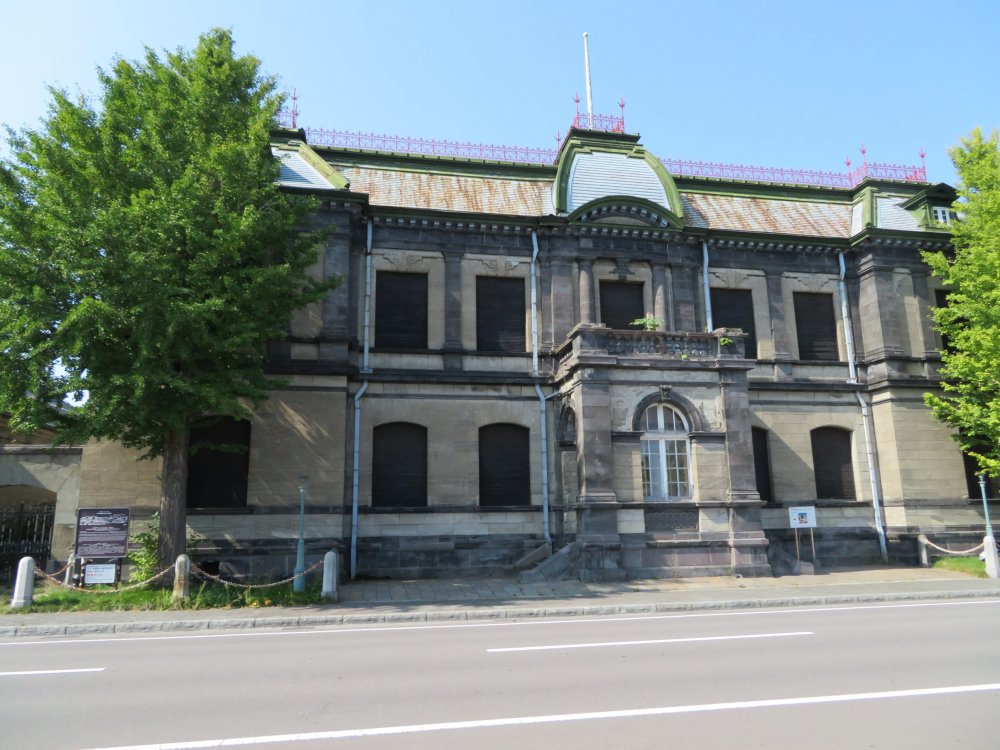
Former Nihon Yusen Company’s Otaru Branch building, maintained as a museum was closed for refurbishment.
Opposite the former Nihon Yusen Company’s Otaru Branch building is the Unga (Canal) Park. The former Nippon Sekiyu warehouse stands on the northern side and is open to the public. It is another stone on wooden frame building built in 1920.
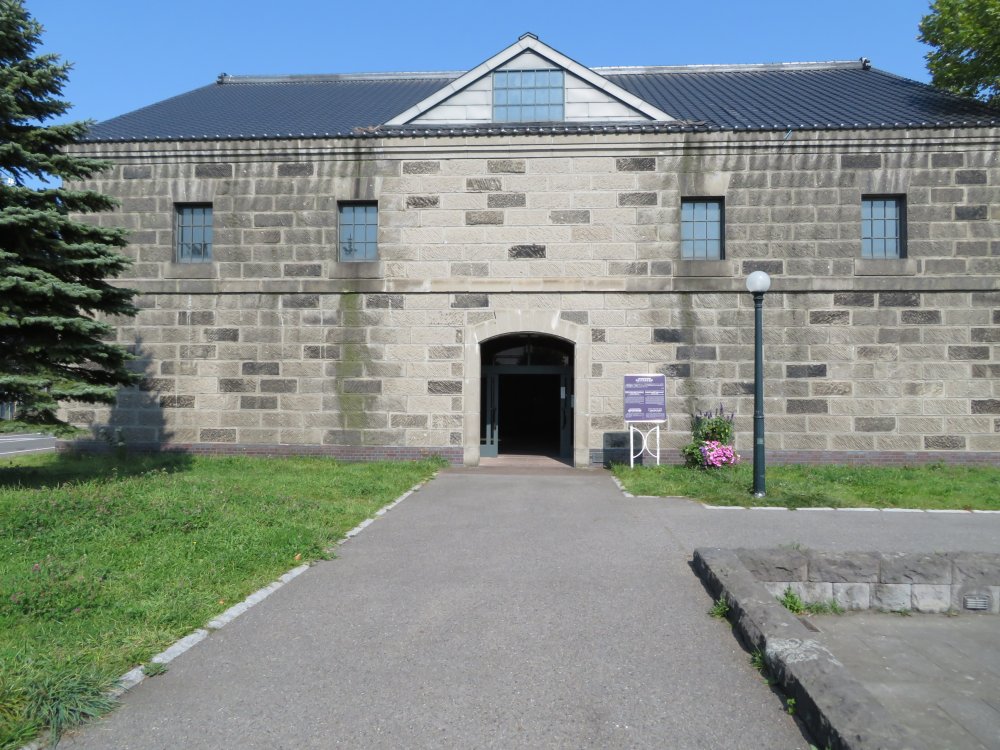
The former Nippon Sekiyu warehouse stands on the northern side of Unga Park and is open to the public.
From there we went to find the tracks of the Temiya Line discontinued in 1985. Temiya Line was part of the Horonai Line linking Otaru and Horonai Coal Mine opened in 1880. The railway between Minami-Otaru and Iwamisawa remains as part of the Hakodate Line linking Hakodate and Asahikawa. It was a great idea to preserve the Temiya Line track and facilities as a public footpath. We enjoyed the pleasant walk along the tracks.
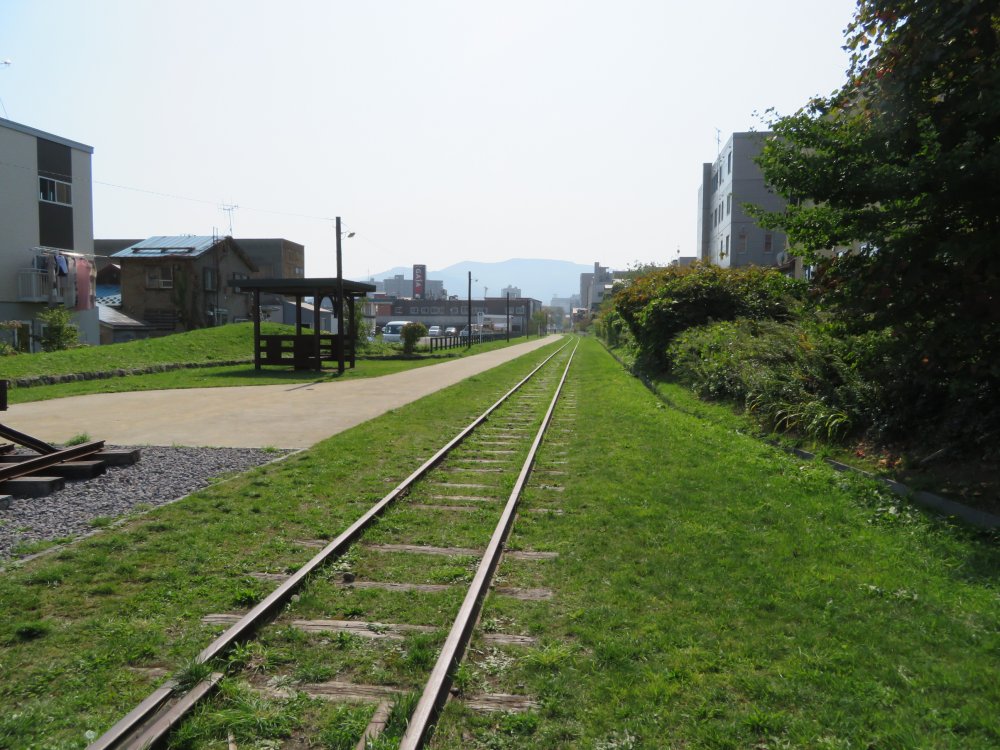
We enjoyed the pleasant walk along the tracks of the former JR Temiya Line discontinued in 1985.
We reached the banking district. Numerous banks opened branches in Otaru during its heydays, so much so that the area was called the Wall Street of the north. Most of the buildings have been retained. We went to the former Otaru Branch of the Bank of Japan. The architect of the grand building opened in 1912 was Kingo Tatsuno famous for his work of Tokyo Station. The branch was open until 2002 after which it became a financial museum open to the public. Unfortunately the museum was closed on Wednesdays.
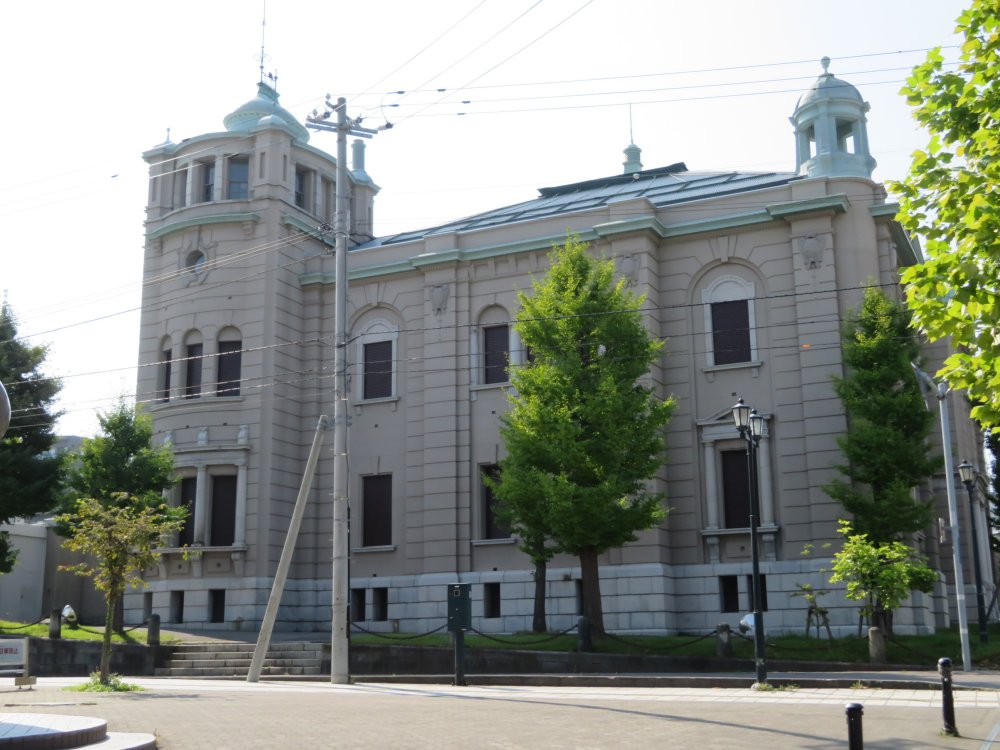
The former Otaru Branch of the Bank of Japan opened in 1912 which is now a museum.
I didn’t know until this visit that Otaru was surrounded by hills. Having visited the churches on the hills in Hakodate, I wished to visit the Otaru Anglican Church on the hills. We finally got to the church but it was closed. I guess you need to visit the church on a Sunday to enter. This wooden church was constructed in 1907.
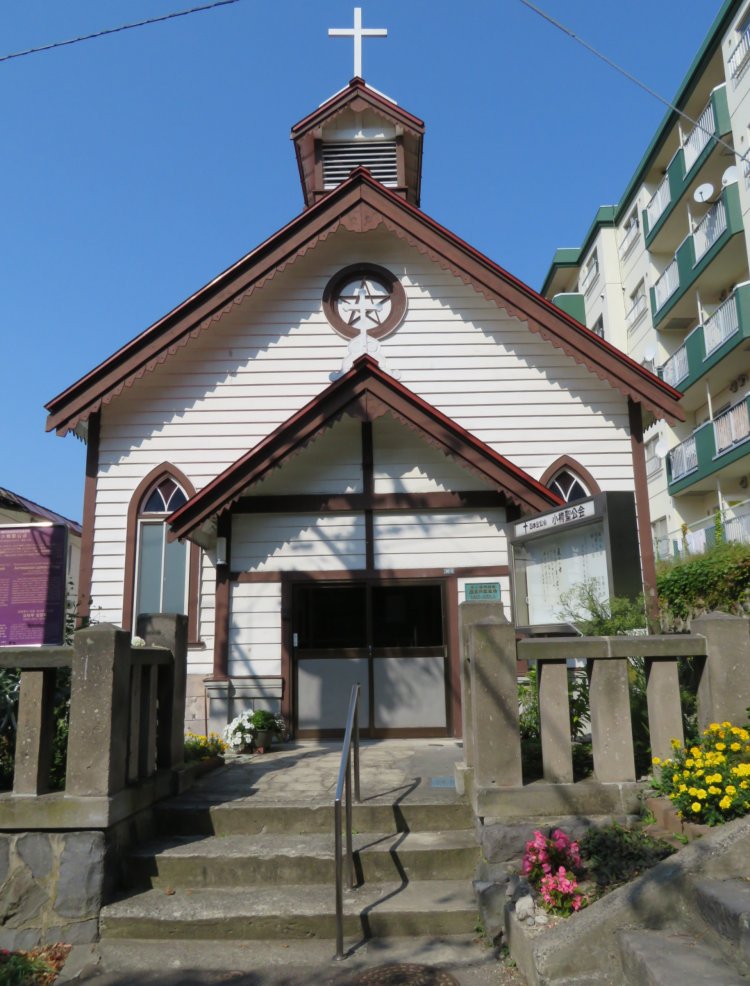
The the Otaru Anglican Church on the hills. The wooden church was constructed in 1907.
We went down the hills to Rouman-kan. This is a popular accessory shop in a former bank. The building built in 1906 housed the Otaru branch of the 113th National Bank, the first bank based in Hokkaido headquartered in Hakodate. The 113th National Bank was merged into Hokkaido Takushoku Bank in 1928, which itself went into bankruptcy in 1997. Tucked in the back in an annex building is a café, where we enjoyed coffee in a quiet and nostalgic atmosphere. There are numerous bank buildings built in the late Meiji and Taisho period that have been preserved and converted into shops and galleries.
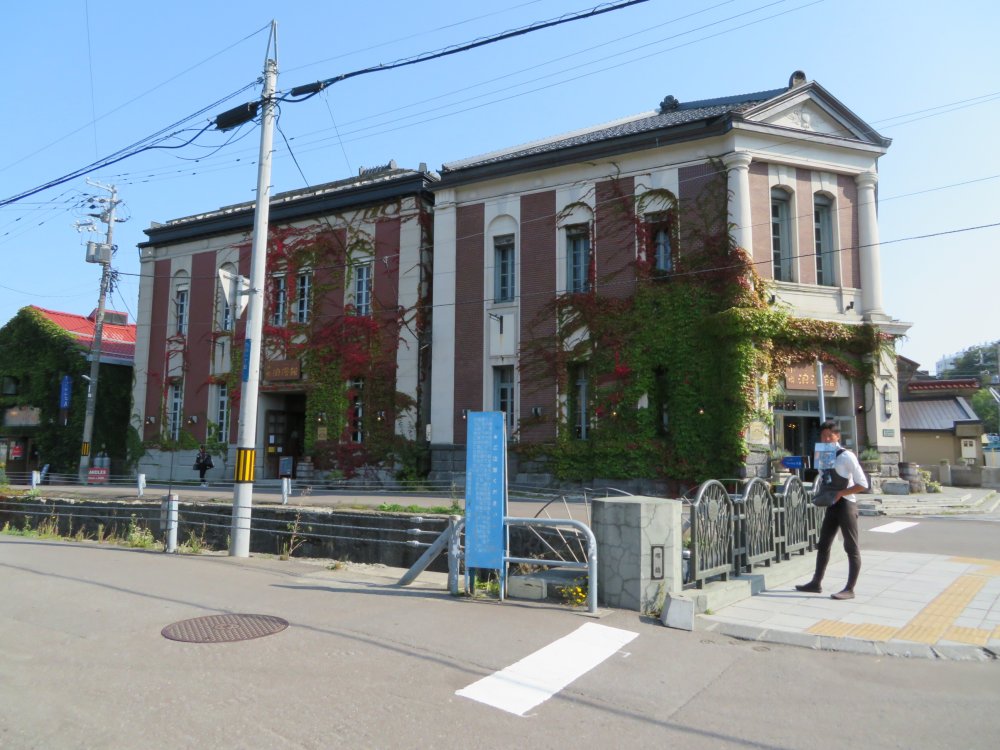
We went down the hills to Rouman-kan. This is a popular accessory shop in a former bank. The building built in 1906 housed the Otaru branch of the 113th National Bank, the first bank based in Hokkaido headquartered in Hakodate.
We left central Otaru and drove northwest about 9 kilometers to Shioya Port on the coast to take a boat cruise to the Blue Cavern (Aonodoukutsu). We had been attracted by the advertisement saying the blue is even more stunning than the Blue Grotto in the Isle of Capri. There are cruises from Otaru Port, but Shioya Port is much closer to the Blue Cave and the fare less costly. I understand that the cruising period is from late April to end September but extends to October weather permitting. We hadn’t booked, but were very lucky to find a flag telling us the cruise was running. We called them on their mobile to be advised to come to the port. A lady was waiting for us at the port who told us they could take us immediately at 14:30 as their boat with the prior guests was just about to return. I guess the boat could hold about ten passengers, but we had the entire boat for us two. The captain was very knowledgeable and told us a lot. He told us that the tall cliffs were created by the eruption of undersea volcanoes and the rise of the seafloor after that. He pointed at the cliffs drawing our attention to the black and red spots indicating the magma. We cruised past a rocky wall sticking out into the ocean to reach the Blue Cavern.
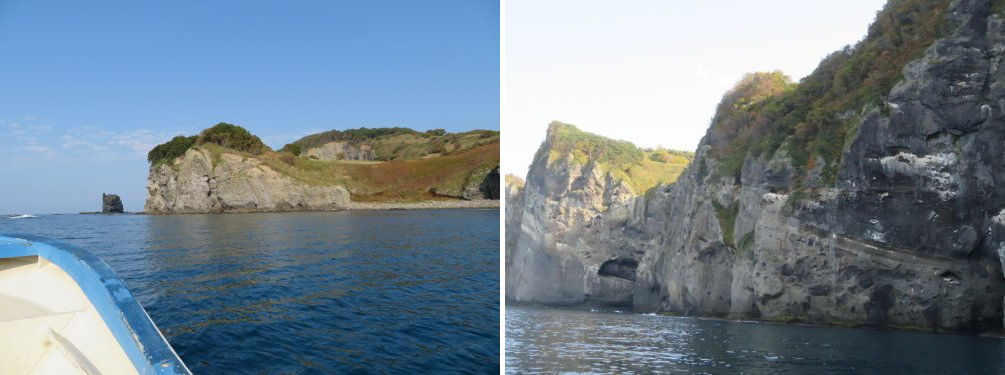
We set out to the sea from Shioya Port (left). The captain pointed at the cliffs drawing our attention to the black and red spots indicating the magma(right)..
The captain asked us to pick up the box water glasses and peer into the sea bottom. “The depth is only a couple of meters. The seabed is igneous rock, and the black spots you see are all sea urchins. We don’t harvest them until they are a couple of years matured” he told us. He navigated the boat into the cavern. “You’re lucky, yesterday there was a long queue of boats waiting to enter the cavern, and above all the sea is calm and it’s sunny. Ideal to experience the Blue Cavern”. Truly the waters in the cavern was a very bright blue. I can’t say whether it’s more stunning than the Isle of the Capri as I’ve never been there, but was certainly exited of the experience. We left the cavern from a different route. It was about a forty minutes’ most enjoyable cruise.
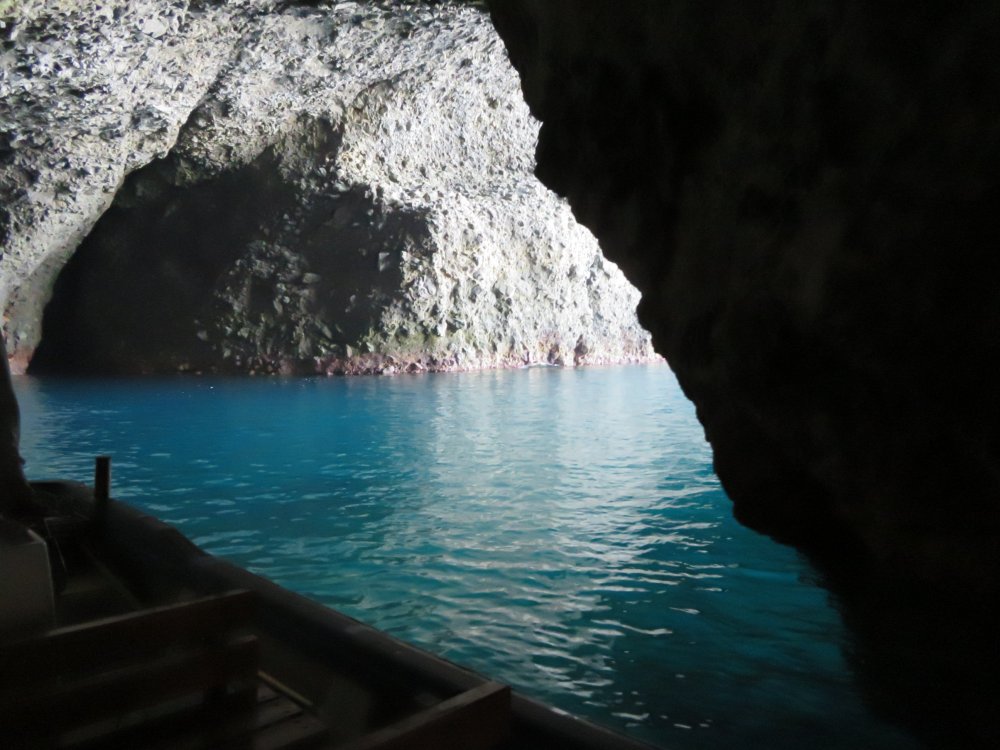
Inside the Blue Cavern. Truly the waters in the cavern was a very bright blue.
We left Shioya Port to visit the last place of interest in Otaru. This is the former Aoyama Family’s villa, now converted into a museum with a Japanese restaurant. I talked about the Aoyama Family when I introduced Aoyama Family’s Fishery buildings in the open-air museum, The Historical Village of Hokkaido in Sapporo. Their main residence is in Yamagata Prefecture from where the originally family came from. The residence boasting eighteen tatami rooms taking six years from 1917 to complete is a true evidence of the wealth amassed by the family from the herring fishing. No wonder it is remembered as an authentic Herring Palace (nishin-goten). The admission fee was 1,100 yen. Browsing through the maze-like residence was interesting but not to the extent of having to pay the admission fee of 1,100 yen.
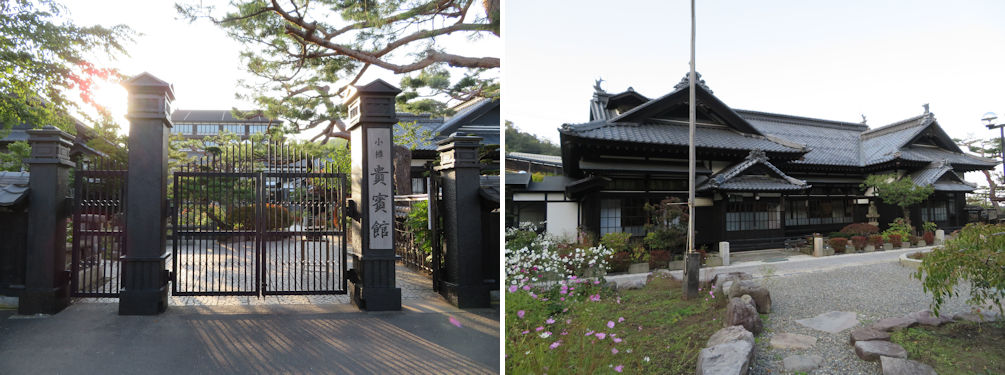
(Left) The entrance gate. The large modern building in the back is Kihinkan with a restaurant and other facilities for special events. The former Aoyama Villa is located on the right hand side of Kihinkan. (Right) View of the former Aoyama Villa from the inner gardens. Entrance to the villa is through the entrance of Kihinkan.